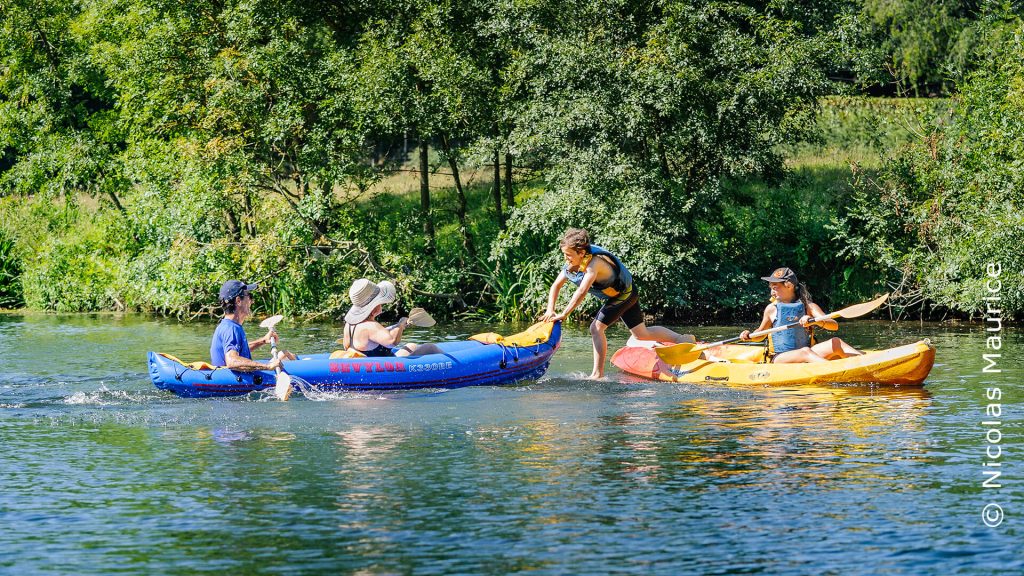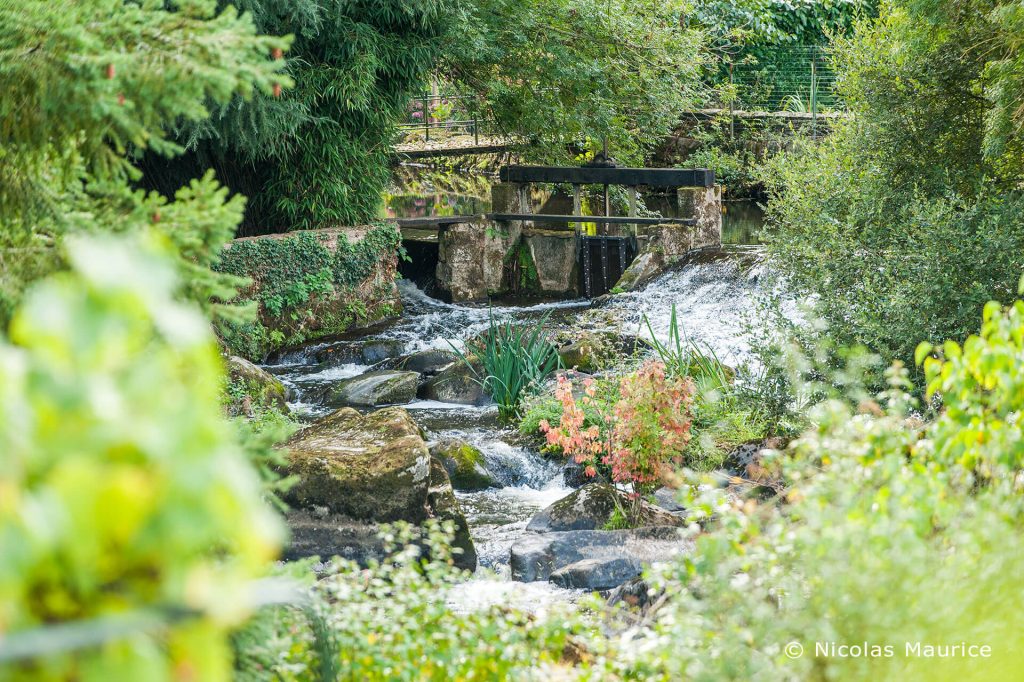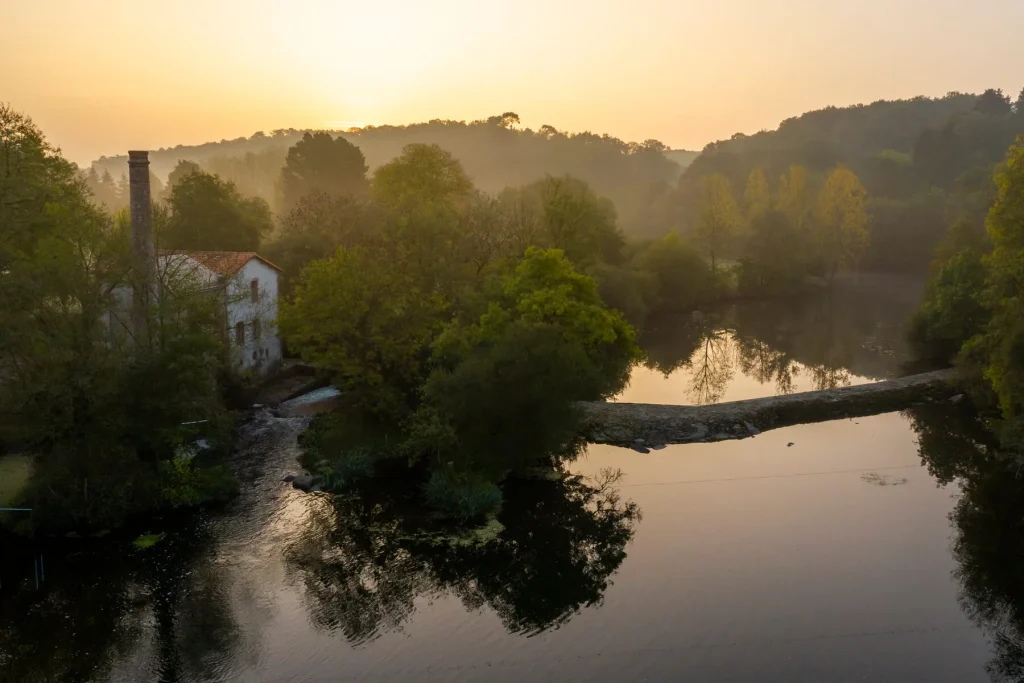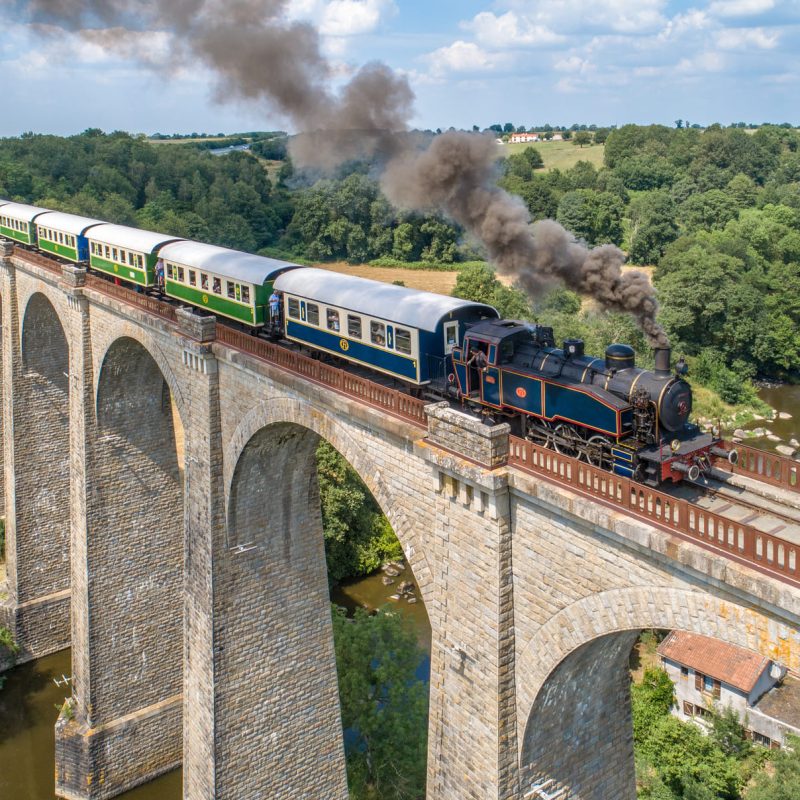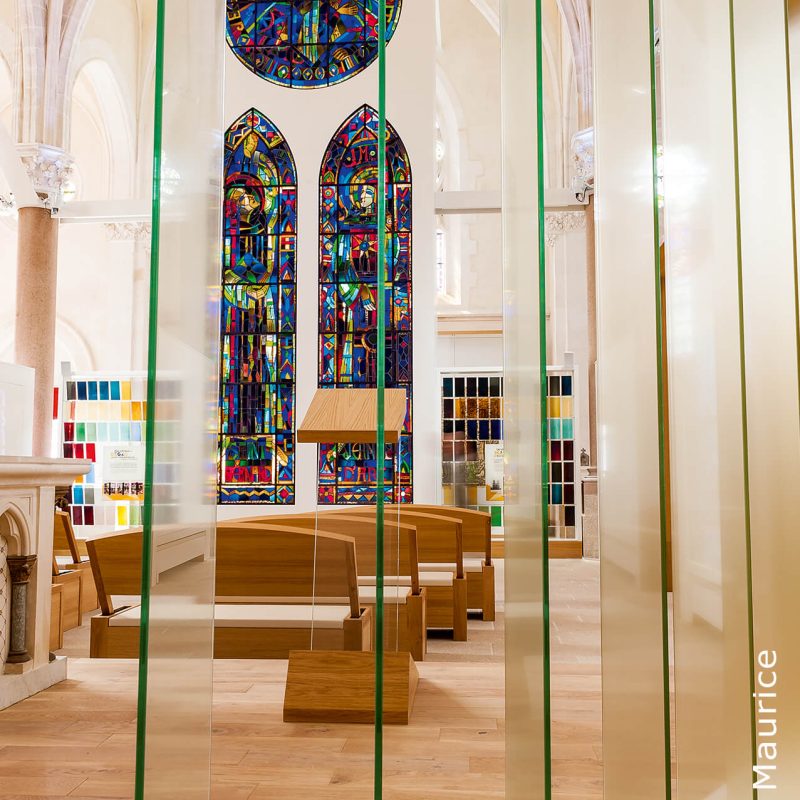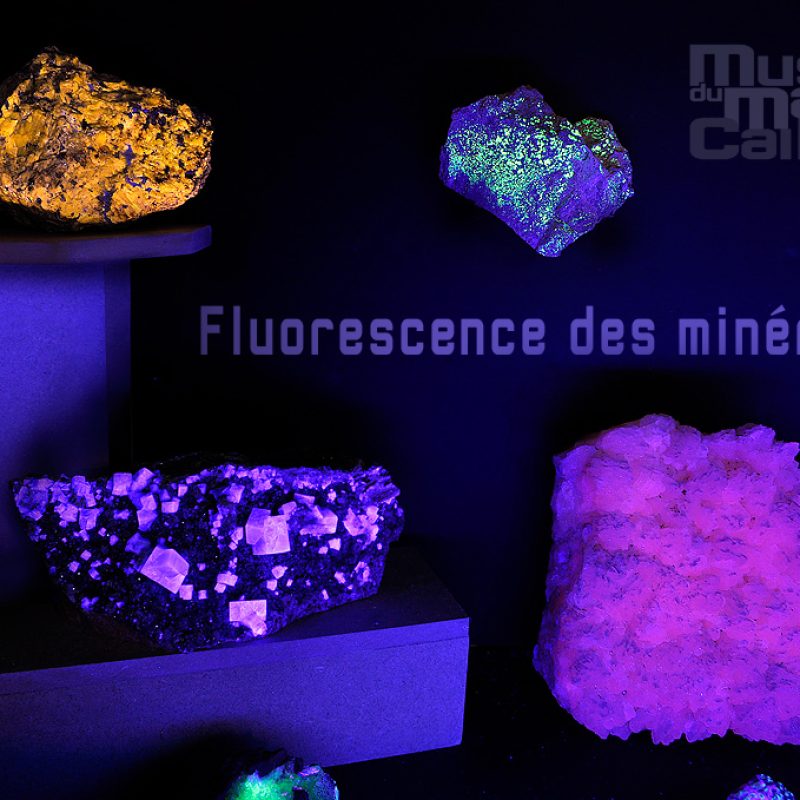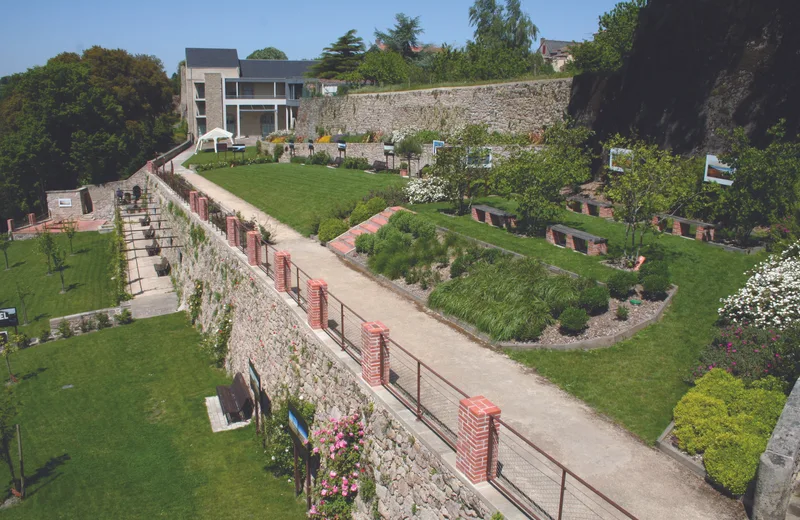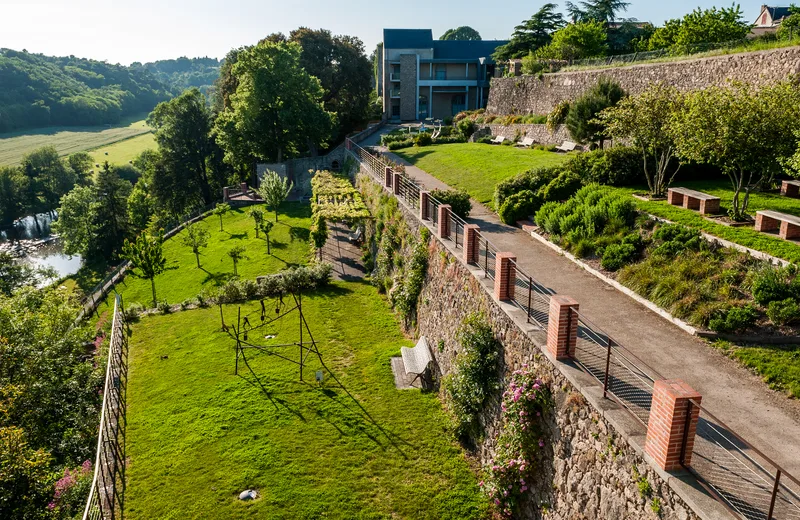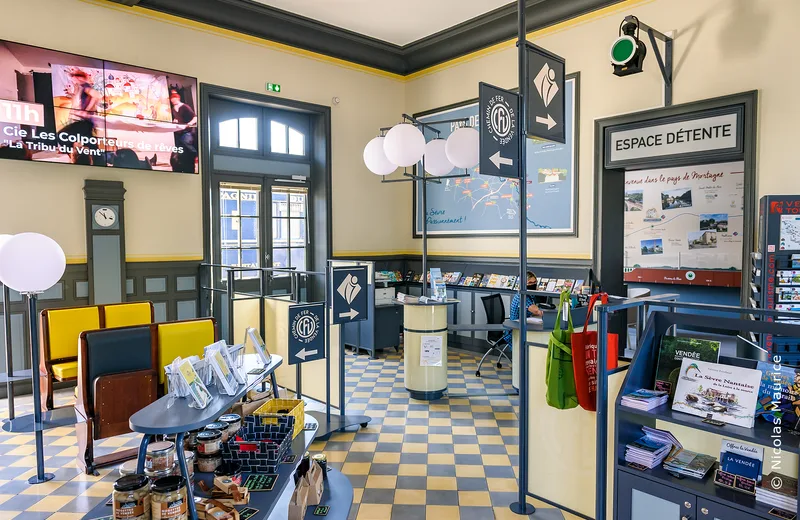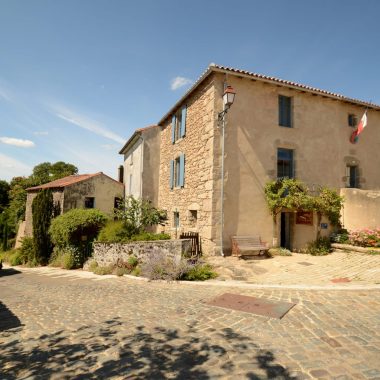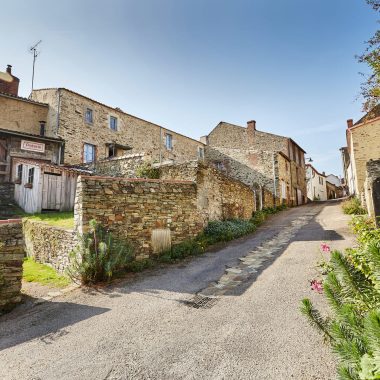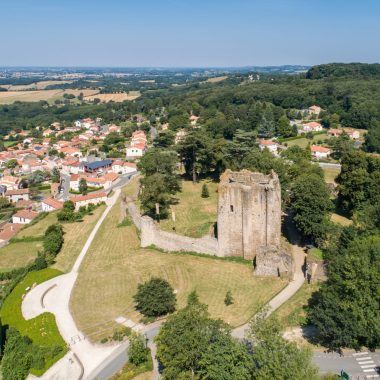Built on the rocky outcrop overlooking the Sèvre, the old medieval city reveals itself to passers-by. Its unevenness, its landscape and architectural heritage, will surprise visitors.
Walking through the streets and alleys of the old Medieval city, the history of Mortagne is revealed through its ramparts, its Renaissance dwellings and noble houses as well as its mills and weavers' houses. Mortagne-sur-Sèvre has obtained the label Small Town of Character in 2022.
Located between Cholet et Les Herbiers, near the Puy du Fou and Cinescenie, this Little Town of Character is an ideal place to stop during your vacation in Vendée.
Visit of Mortagne-sur-Sèvre
His history
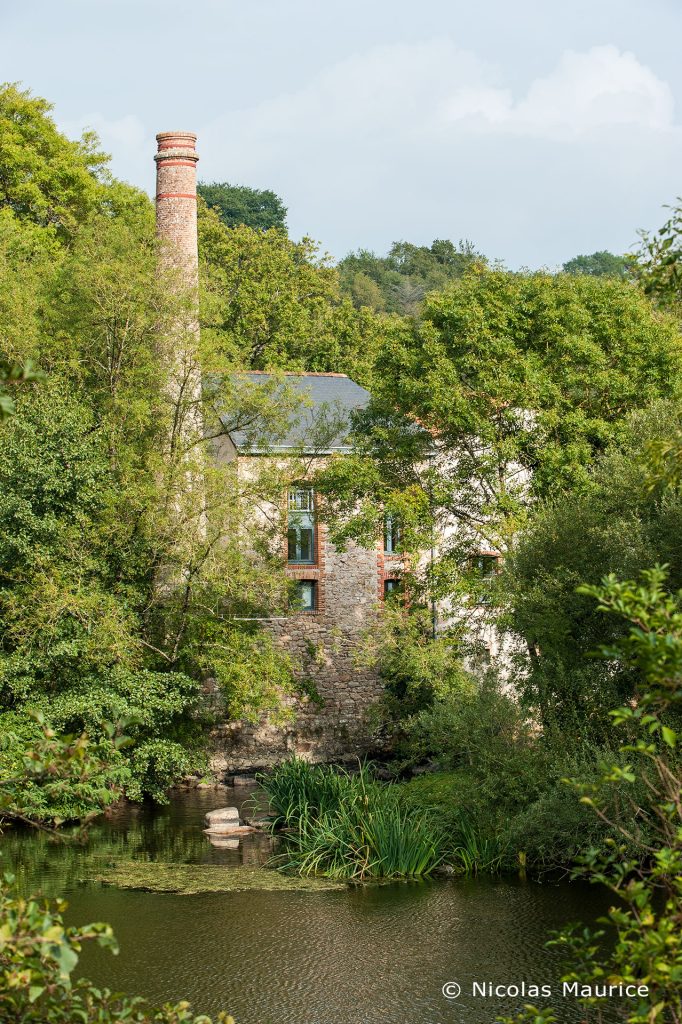
The human presence in Mortagne is very old: we find traces of the first citadel under Caesar. THE built heritage of the city center is representative of the evolution of the town. Its history is marked in stone from the 10th-10th century. A key town in the defense line of Poitou, the city developed around the Saint-Pierre church, its priory and the castle, built on the rocky outcrop. From this period also remains the layout of the streets, alleys and squares whose names bear witness to their medieval origin: rue de La Juiverie, impasse des Créneaux, rue du Château... From the 12th century, the medieval city of Mortagne is at least as larger than that of Carcassonne. The organization of the city that we know today, as if folded in on itself, is a blatant legacy of the medieval city.
During the following centuries and during the Renaissance, several buildings were built, including lodgings (Vaugirard, Grand Logis Thibault, La Croix Bureau) and noble houses (la Grange, Treize-Vents, Saint-Martin). Walking through the streets, we also find the influence of the so-called “Clissonnaise” architecture of Baron Lemot, with the alternation of brick and granite.
Due to its immediate proximity to the Sèvre, from the 15th century, Mortagne saw paper mills flourish on its banks. Finally, the weavers' houses, The numbers mills along the Sèvre or the site of Fleuriais bear witness to the industrial dynamism of the town, from the 15th century.
The castle of Mortagne-sur-Sèvre
A strategic place in the Middle Ages, this ancient medieval city still has some vestiges, notably the Mortagne Castle. Built on a rocky outcrop, this fortress allowed the lords to extend their powers to 22 surrounding parishes. Several remarkable elements make up this medieval site:
- The Treasury Tower was built in the twelfth century.
- The spur tower, created towards the end of the XNUMXth century, is also called the “tower of the English”.
- The manor, dating from the beginning of the XNUMXth century, was created between the high ramparts and the spur tower.
St. Peter's Church
Located in the heart of historic center, it dominates the landscape with its size and its brilliance. Rebuilt in 1050 in the footsteps of an ancient church of which few elements remain, the building has accumulated different architectural styles over the centuries, which makes it unique.
Attached to St. Peter's Church, the Saint-Léger chapel was built in 1270 by Mabille de Maulévrier to provide a place of worship for the Benedictine monks of the priory of Saint-Pierre-de-Mortagne. Inside, you can observe the recumbent figure of Mabille de Maulévrier, classified as a Historic Monument, and the XNUMXth century frescoes.è century.
A multitude of activities
Climb aboard the steam train!
Mortagne station is also the starting point of the Vendée Railway. This getaway allows you to appreciate the exceptional view of the Vendée bocage and the valley of the Sevre Nantes. A journey through time in this steam locomotive!
Discover the art of stained glass!
Located in the heart ofSaint-Hilaire church from Mortagne-sur-Sèvre, Vendee Stained Glass invites its visitors to a fun and interactive discovery.
Familiarize yourself with minerals!
This museum is a journey between realism and imagination that plunges you into a symphony of shapes, sparkles and colors.
Stroll through the gardens!
Sheltered from the life of the village, facing south towards the river, the Gardens of the Cure offer beautiful panoramas over the Sèvre Nantaise valley. In order to preserve the deep history of this place, the restoration of these gardens in 2012 made it possible to highlight its stairs, pools and fountains in a Clissonais style. Biodiversity also has its place: vegetable garden, insect hotel, vegetation and eco-pasture. These gardens have a very appreciated educational and cultural character, like the events they host: exhibitions, shows, concerts, etc.
In Mortagne, an important place is given to plants. So you can stroll through the Retailleau park, regularly hosting exhibitions or in the Beaussire garden. The latter, located at 19rd century on the ruins of the Aumonerie Notre-Dame, is one of the landscape wonders of the town. Inside, the old orangery has become a place of historical exhibition.
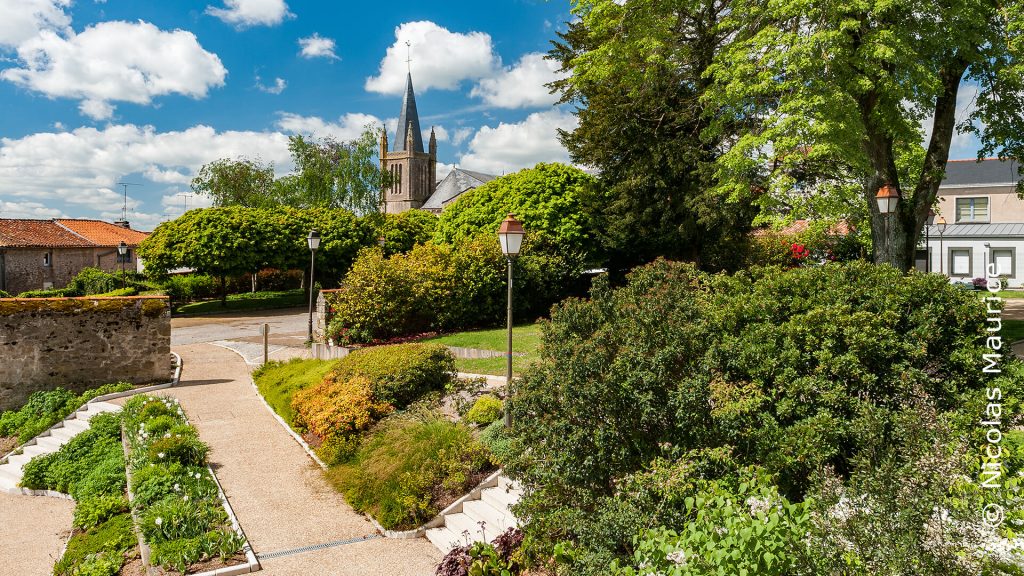
Several possibilities to visit Mortagne-sur-Sèvre
The hiking circuits
Along the water
The Nantes Sèvre, sometimes called “Sèvre with rolling menhirs”, is emblematic of the town it borders for 13 km. Around twenty mills and roads bear witness to the artisanal and industrial past of Mortagne-sur-Sèvre. Today the river offers an ideal setting for outdoor activities. Hiking trails, picnic areas, canoeing , climbing... numerous possibilities are available to visitors to enjoy the edges of Sèvre.
